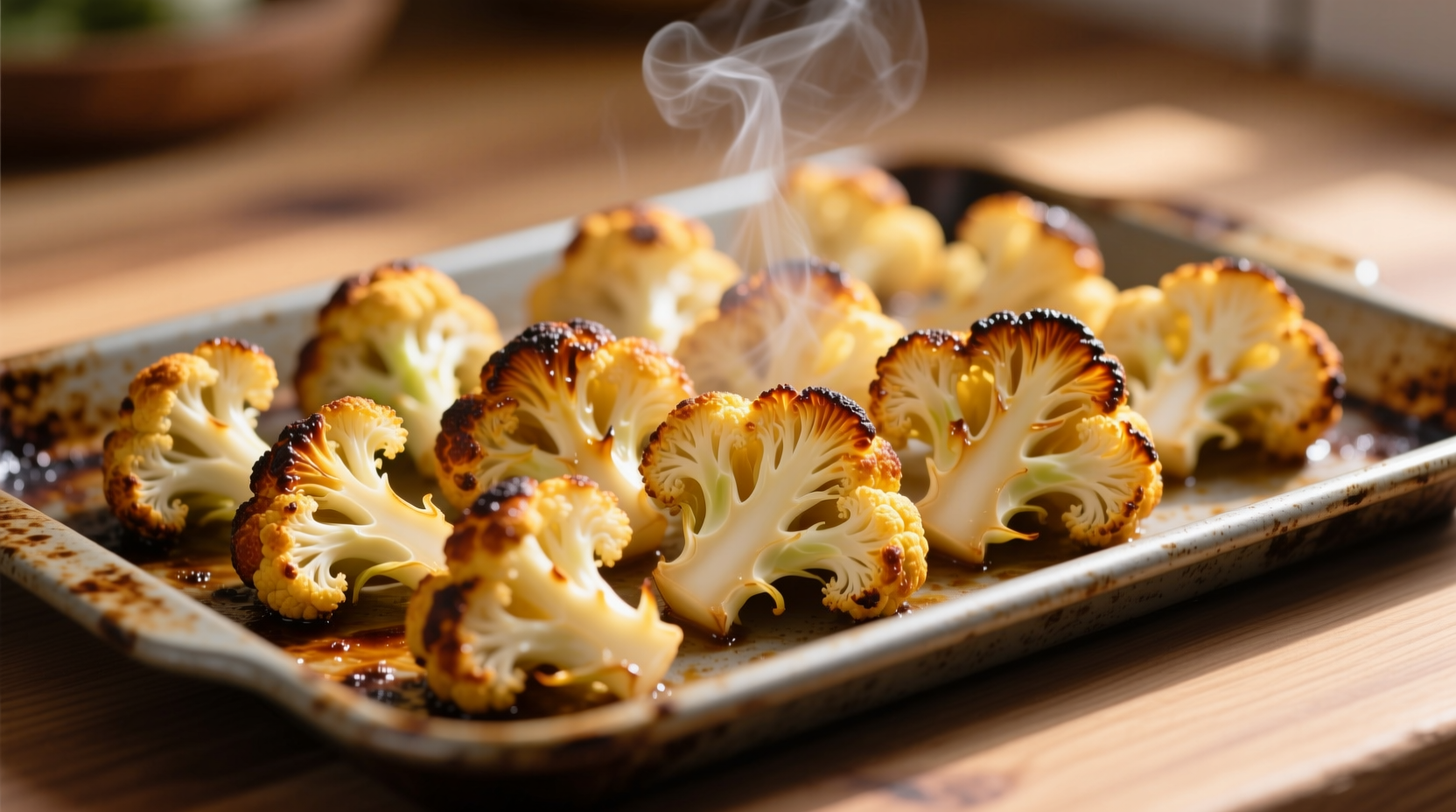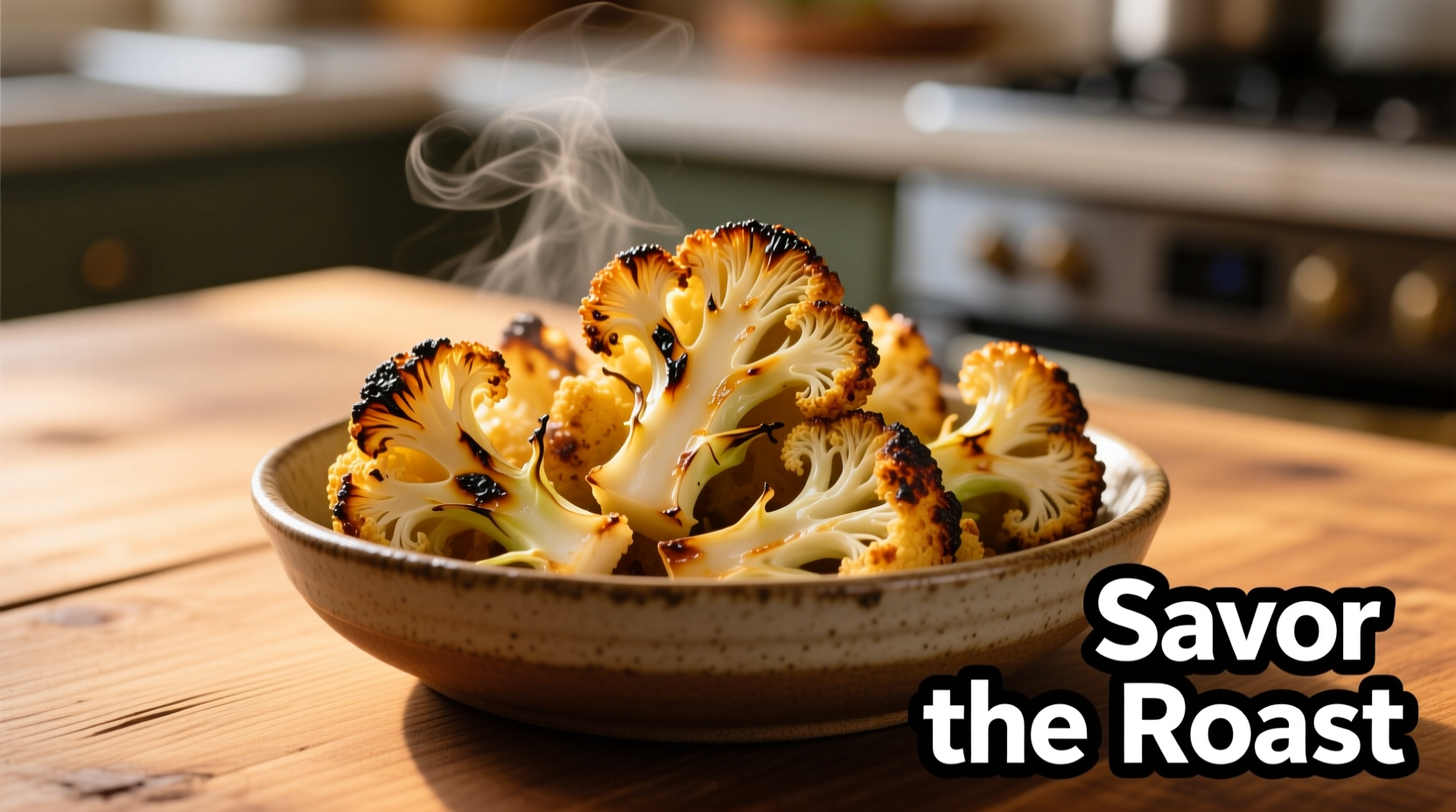The Transformative Power of Proper Cauliflower Cooking
Many home cooks dismiss cauliflower as bland or boring, but that's usually the result of improper preparation. When cooked correctly, this cruciferous vegetable develops complex nutty-sweet flavors and versatile textures that can elevate any meal. Understanding the science behind cauliflower's transformation during cooking unlocks its potential as a nutritional powerhouse and culinary chameleon.
Why Cooking Method Matters: The Science Behind Texture and Flavor
Cauliflower contains glucosinolates—compounds that create its distinctive aroma when heated. The key to delicious cooked cauliflower lies in managing these compounds through precise temperature control. High heat triggers Maillard reactions that develop rich flavors, while gentle cooking preserves delicate textures.
| Cooking Method | Optimal Time | Temperature | Texture Outcome | Flavor Development |
|---|---|---|---|---|
| Roasting | 20-25 minutes | 425°F (220°C) | Crisp edges, tender interior | Deep caramelization, nutty notes |
| Steaming | 5-7 minutes | 212°F (100°C) | Firm yet tender | Delicate sweetness preserved |
| Boiling | 6-8 minutes | 212°F (100°C) | Risk of sogginess | Mild sulfur notes if overcooked |
| Sautéing | 6-8 minutes | 375-400°F (190-205°C) | Crisp-tender | Buttery, complex notes |
This comparison, based on USDA Food Safety and Inspection Service guidelines, shows how different approaches affect both texture and flavor chemistry. Roasting creates the most complex flavor profile through caramelization, while steaming best preserves cauliflower's natural sweetness without developing sulfur compounds.
Step-by-Step Perfect Cauliflower Every Time
Preparation Essentials
Start with proper preparation: Remove outer leaves, trim the stem flush with the base, and cut florets to uniform size. Soak in cold salted water for 10 minutes to remove any hidden insects—a food safety recommendation from the FDA. Pat completely dry before cooking, as excess moisture causes steaming instead of browning.
Roasting Technique
Preheat oven to 425°F (220°C). Toss florets with 1 tablespoon olive oil per pound, ensuring even coating. Spread in a single layer on a parchment-lined baking sheet. Roast 20-25 minutes, flipping halfway, until deeply golden at the edges. The Natural Resources Defense Council confirms this method maximizes antioxidant retention compared to boiling.

Steaming Success
Use a stainless steel steamer basket over 1 inch of rapidly boiling water. Place florets in the basket, cover, and steam 5-7 minutes until fork-tender but still slightly firm. Immediately transfer to an ice bath for 30 seconds to stop cooking—a technique recommended by the American Culinary Federation for perfect vegetable texture.
Flavor Enhancement Strategies
Elevate your cooked cauliflower with these professional techniques:
- Acid balance: Finish with lemon juice or vinegar to brighten flavors (1-2 teaspoons per pound)
- Fat incorporation: Toss with quality olive oil or melted butter after cooking
- Umami boosters: Add nutritional yeast, miso paste, or Parmesan during the last minute of cooking
- Spice layering: Toast whole spices like cumin or coriander before grinding for maximum flavor release
Avoiding Common Cooking Mistakes
Most cauliflower disappointments stem from these preventable errors:
- Overcooking: Results in mushy texture and strong sulfur aroma. Set timers and check early.
- Uneven sizing: Causes some pieces to overcook while others remain raw. Cut to consistent 1.5-inch pieces.
- Insufficient seasoning: Cauliflower needs generous salt. Use 1 teaspoon per pound of water when boiling.
- Crowding the pan: Prevents proper browning. Use multiple baking sheets if needed for roasting.
Context-Specific Cooking Recommendations
The best cooking method depends on your intended use:
- For salads or cold dishes: Steam or blanch to maintain crisp texture
- For mashing or purees: Boil until very tender, then drain thoroughly
- For stir-fries or quick dishes: Sauté over high heat for minimal time
- For maximum flavor depth: Roast at high temperature for caramelization
Nutritional Benefits of Properly Cooked Cauliflower
Cooking affects cauliflower's nutritional profile in significant ways. According to USDA FoodData Central, cooked cauliflower retains 75-90% of its vitamin C content when steamed, compared to 50-60% when boiled. Roasting enhances the bioavailability of certain antioxidants while preserving fiber content. One cup of cooked cauliflower provides 77% of your daily vitamin C needs and only 28 calories, making it an excellent nutrient-dense addition to any diet.
Storage and Reheating Guidelines
Store cooked cauliflower in an airtight container in the refrigerator for up to 4 days. For best results when reheating:
- Oven/Toaster Oven: 350°F (175°C) for 10-12 minutes to restore crispness
- Stovetop: Sauté in a hot pan with a touch of oil for 3-4 minutes
- Avoid Microwave: Typically makes cauliflower soggy unless covered with a damp paper towel
Practical Recipe Applications
Transform your perfectly cooked cauliflower into these delicious dishes:
- Breakfast: Add roasted florets to frittatas or hash browns
- Lunch: Toss steamed cauliflower with chickpeas, lemon-tahini dressing, and fresh herbs
- Dinner: Puree boiled cauliflower with roasted garlic for a creamy side dish
- Snacks: Air-fry cauliflower florets with spices for crispy bites











 浙公网安备
33010002000092号
浙公网安备
33010002000092号 浙B2-20120091-4
浙B2-20120091-4